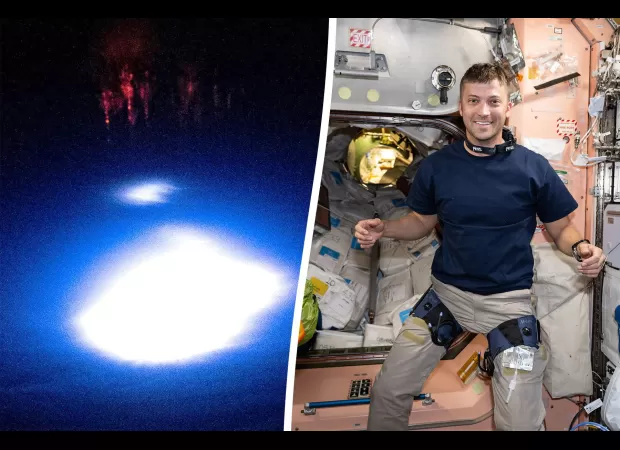ISS astronaut sees unexplained red lights above Earth
Red sprites are a type of rare natural occurrence.

As he gazed out the window of the International Space Station, flight engineer Matthew Dominick couldn't believe his eyes. Over the years, there have been some bizarre sightings from the ISS, but this one was truly remarkable. A space snake, UFOs, strange lights - the list goes on. However, this time, it was something even more extraordinary.
For the snake sighting, one would have to turn to retired NASA astronaut Dr. Story Musgrave. He claims to have come face to face with an eight-foot-long white reptile not once, but twice during his missions. But it was Dominick who managed to capture a different kind of phenomenon in action - a mesmerizing thunderstorm with dazzling red sprites.
As the ISS zoomed around the Earth at a speed of 250 miles above the surface, Dominick, a former US Navy Commander, spotted and captured the red sprites on camera. These flashes of colored lightning reach up into the mesosphere, about 50 miles above the surface, unlike ordinary lightning that strikes downwards from the clouds to the ground.
It takes a keen eye and a bit of luck to spot these elusive red sprites. They can take on various shapes, from a jellyfish to a carrot, and can stretch up to 30 miles across. While some lucky individuals on the ground may catch a glimpse of them, they are more commonly seen from planes or space, thanks to the storm clouds obstructing the view below.
The photo, taken on June 3, was described by NASA as a "transient luminous event," which includes red sprites. These colorful bursts of energy occur above storms as a result of lightning activity within and below the clouds on Earth. In October, ESA astronaut Andreas Mogensen also captured a red sprite from space, estimated to be roughly nine by 16 miles in size.
For Dominick, it was just one of the many incredible moments during his mission on the ISS that began in March. NASA explained that these bright red flashes are still not fully understood and are associated with powerful lightning events that occur high above the clouds in the mesosphere. ISS crew members often capture these transient luminous events with wide focal lengths during Earth timelapses.
However, the ISS has more than just cameras to capture these phenomena. Mounted outside the station is the Atmosphere-Space Interactions Monitor, equipped with cameras, photometers, X-ray and gamma-ray detectors, which provide valuable data for researchers on Earth. It's almost like having an unfair advantage when it comes to capturing cool weather events. But hey, who's complaining?






